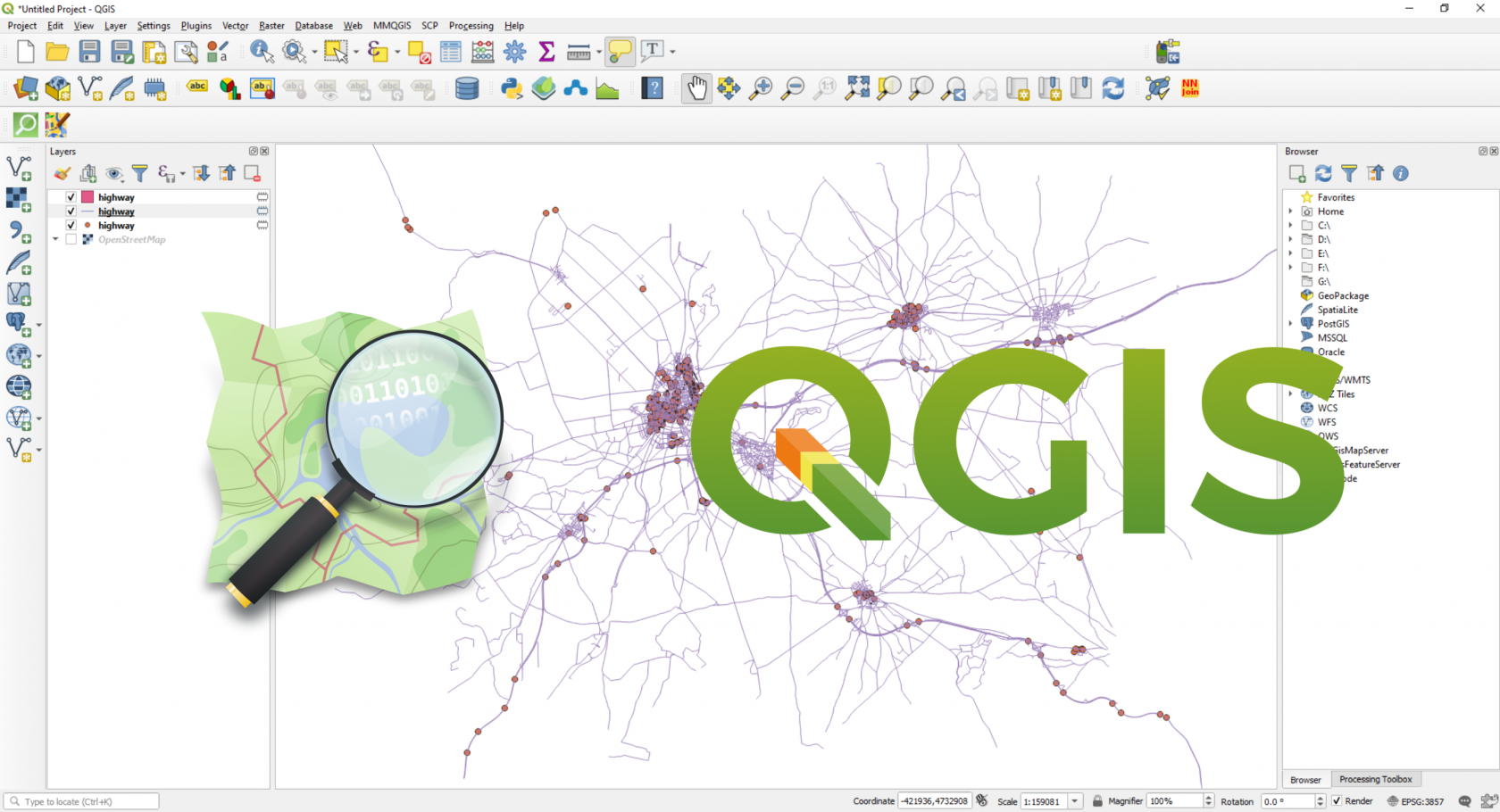QGIS

QGIS
QGIS (Quantum GIS) is a free and open-source Geographic Information System (GIS) software that allows users to visualize, analyze, and manage geospatial data. It is a cross-platform software that can run on Windows, macOS, Linux, and other operating systems.
QGIS provides a wide range of tools for handling and processing various types of geospatial data, such as vector, raster, and spatial databases. Users can use QGIS to perform spatial analysis, create maps, edit and manage geospatial data, and share their work with others.
Some common applications of QGIS include:
- Creating and editing maps: QGIS allows users to create custom maps using various types of data, such as satellite imagery, topographic maps, and demographic data.
- Spatial analysis: QGIS offers a range of tools for spatial analysis, including buffer analysis, spatial joins, and interpolation.
- Data management: QGIS allows users to manage and manipulate geospatial data from various sources, such as shapefiles, geodatabases, and CSV files.
- Geocoding: QGIS can be used for geocoding, which involves converting addresses or place names into geographic coordinates.
How QGIS is used in the control room:
· Acquisition of coordinates to create a geo-fence and / or buffer zone.
· QGIS can be used in conjunction with TX 140 software to monitor the location of earth moving vehicles and also visualize weather patterns.
